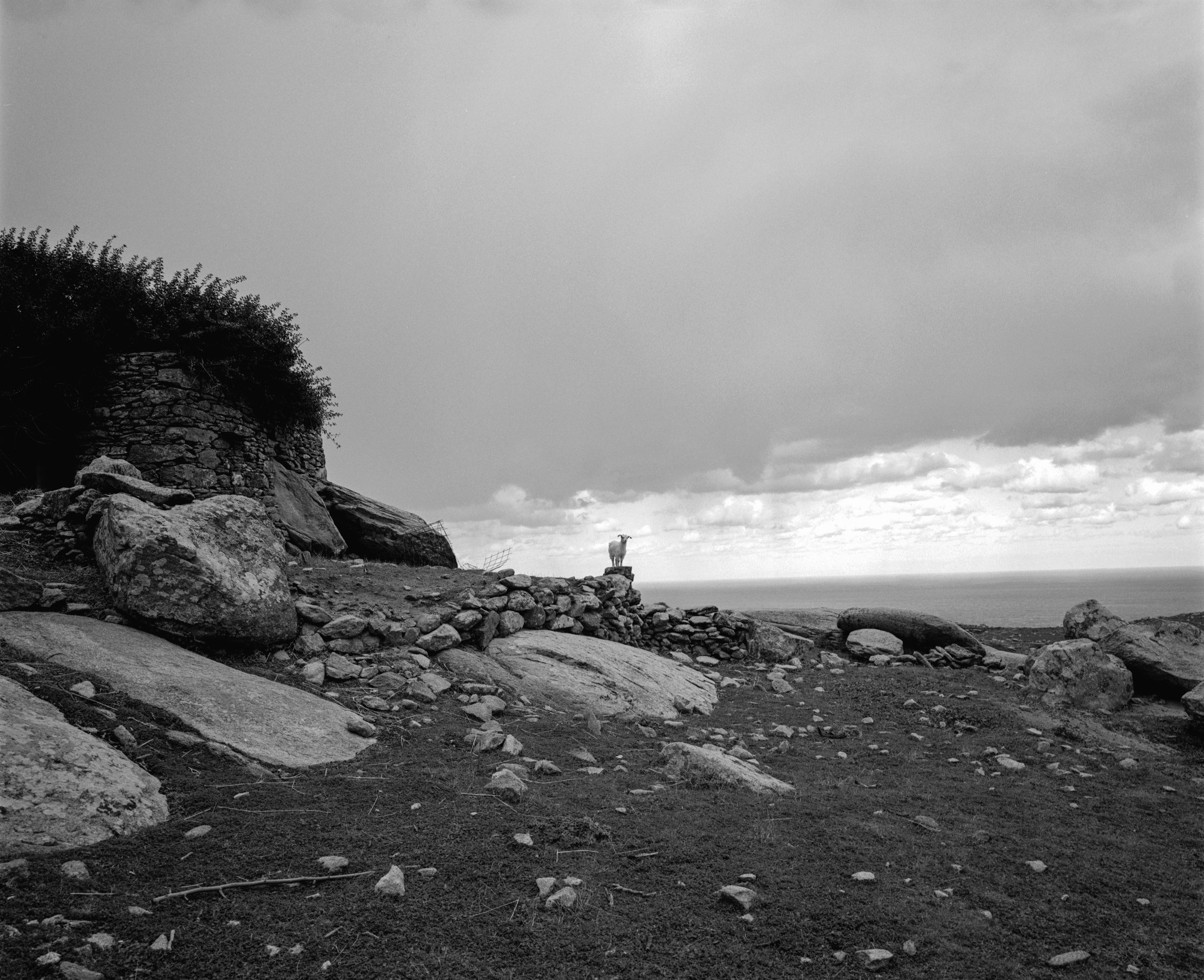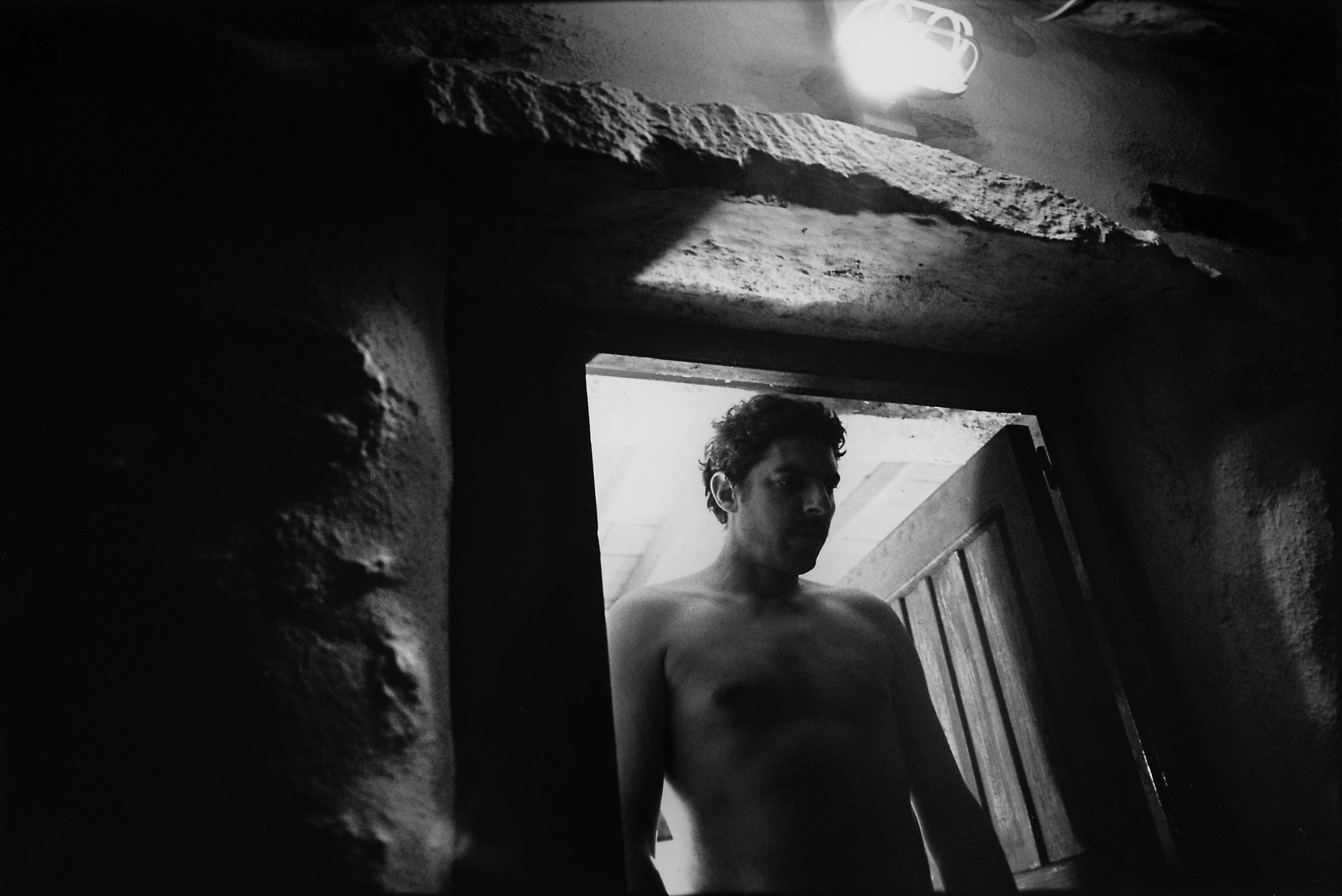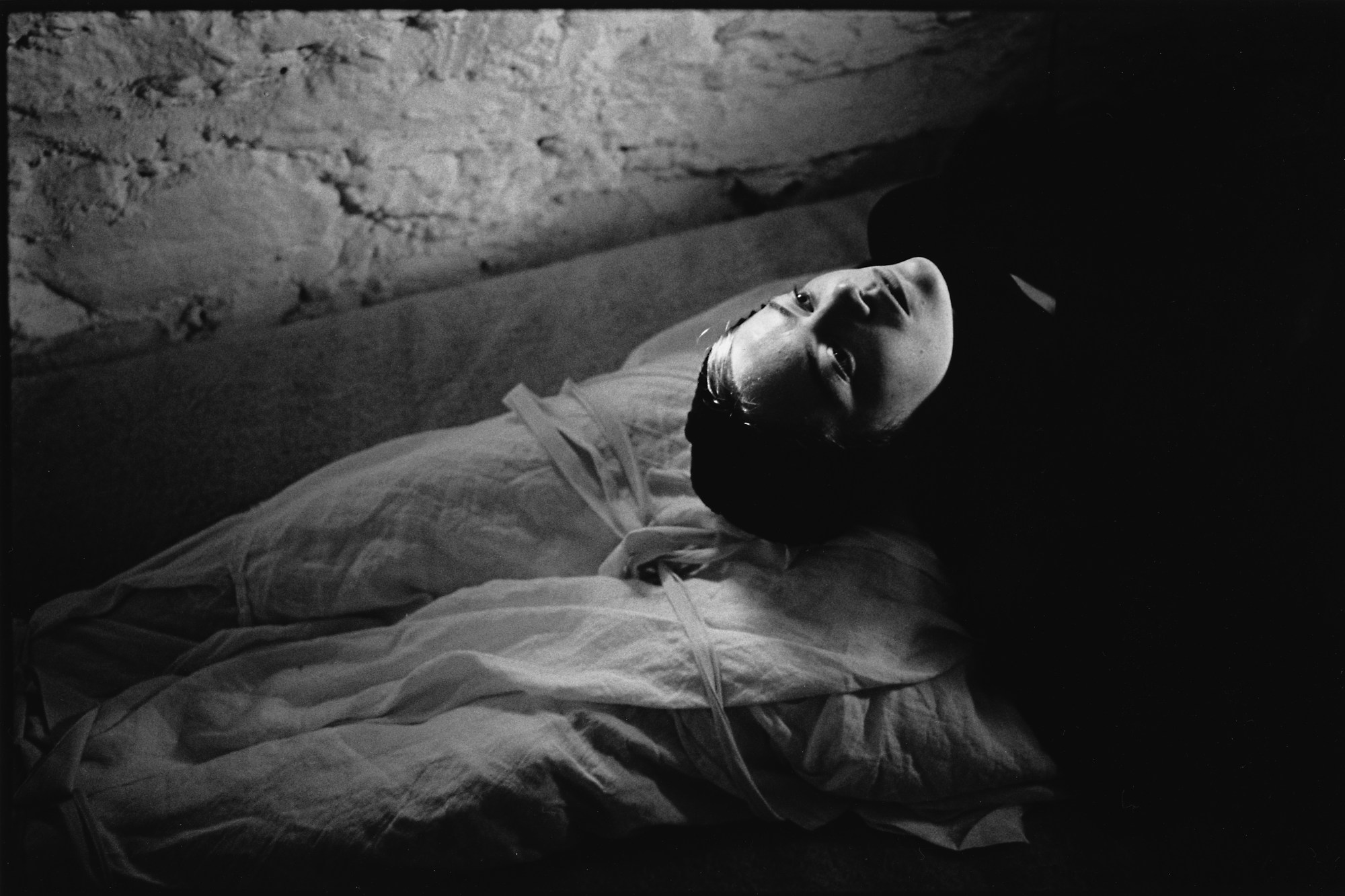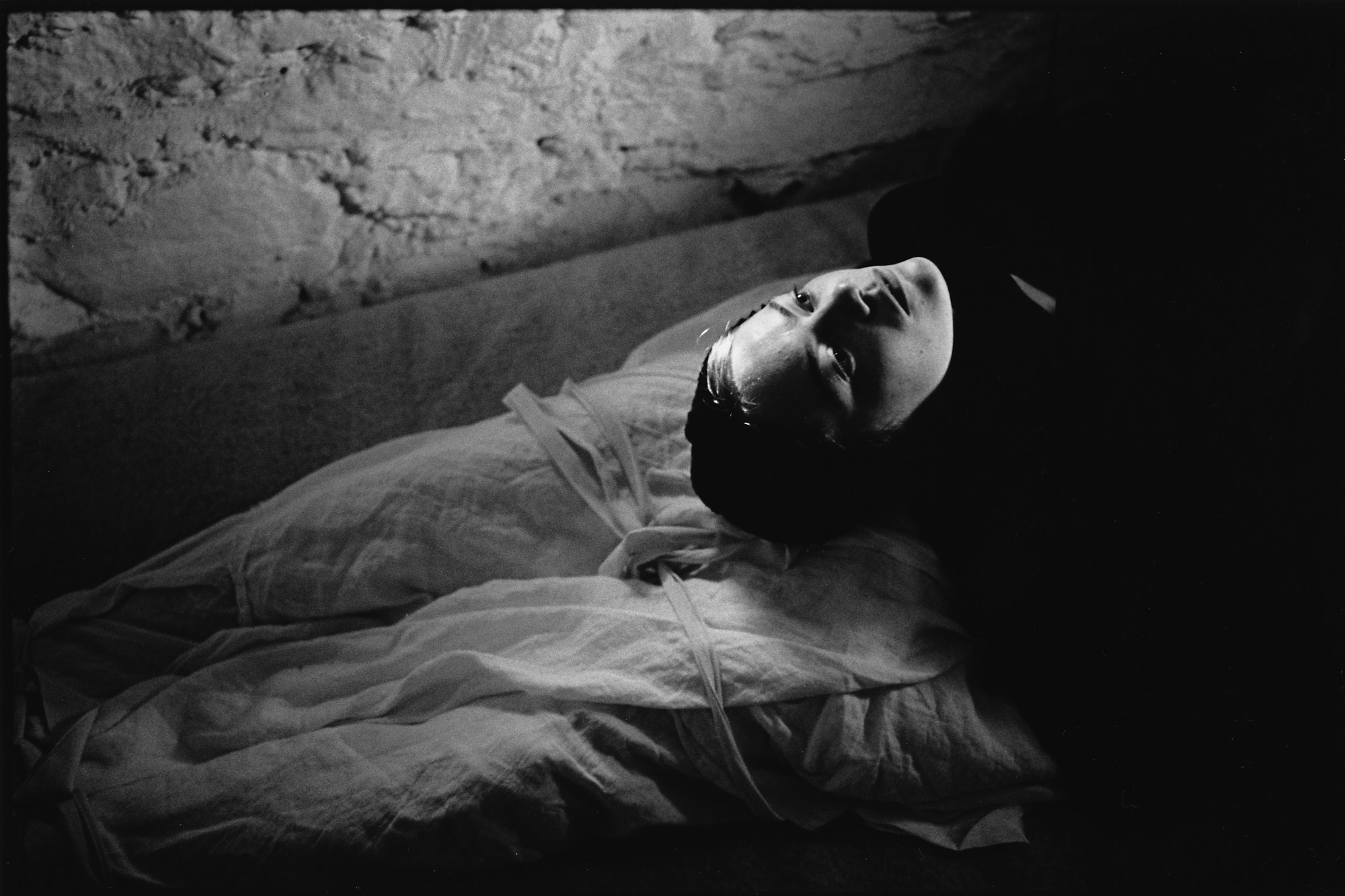In Athens, at the press conference that followed the first ever screening of Yorgos Lanthimos’ next movie Bleat, a local journalist raised his hand and asked the filmmaker a question: “Is it always your intention to be so transgressive?”
Moments earlier, we had witnessed the first project from the Greek director since 2018’s oddball period comedy The Favourite: an absurd and critically-acclaimed film about a lesbian ménage à trois involving Queen Anne. Now he’s debuting a short film that’s been in the making since The Favourite’s release.
Borne from a 2018 discussion, shot in early 2020, but only now seeing the light of day — and in very specific circumstances (more on that shortly) — Bleat is the product of Yorgos’ collaboration with Neon, a Greek artistic non-profit, and the Greek National Opera. Yorgos was the guest here; what they made together forms a new chapter in Neon and the GNO’s ongoing series that explores the relationship between visual art and opera, titled The Artist on the Composer.
Shot on black-and-white 35mm film, so weathered in appearance it’s almost as if Yorgos plucked it pre-battered from the annals of filmmaking history, Bleat is a film that feels like a return to his unsettling roots. Set on an island off the coast of Greece, Tinos, the film opens with shots of goats — a local delicacy — grazing the land that appears to have been untouched for centuries. (The image below, premiering exclusively on i-D, captures the film’s main bleating protagonist). Inside a traditional Greek lodge, what appears to be a memorial is underway. A group of elders, dressed in old-fashioned cloaks but wearing contemporary timepieces, gather in the home of a woman, played by Emma Stone. (Emma — an Oscar winner whose reputation usually commands a millions-of-dollars fee — took part in the project for free, as a fan and frequent collaborator of Yorgos.)

These visitors funnel out onto the open, wind-weathered topography leaving the woman alone with the body of a man — Damien Bonnard — who we imagine is her former lover. Having gorged on cookies, artichokes and black olives, she observes the lifeless body and, for reasons unbeknownst to the viewer, mounts him, conducting a strange act of forced, posthumous cunnilingus as she licks the face of an effigy plastered to the wall. If you look close enough, it appears to resemble Emma Stone’s character herself.
She thrusts and writhes, possessed, then drops backwards, dead. The power of this practise has resurrected her dead lover. They swap clothes and, with that aforementioned rather adorable goat leading the way, he drives in a modern pick-up truck to a faraway dusty landscape and buries her body.
What ensues is as obscure as the set-up; a strange and indecipherable mood-piece. It feels, in terms of its uninhibited audacity (the film will not receive a traditional release), like his earlier pre-studio work. Graphic and gorgeous, a test audience’s nightmare, in many ways it doesn’t command a clearer meaning. And if you’re looking for Yorgos to tell you it, then tough luck. No matter how many probed him afterwards — about exactly what we had witnessed — he didn’t really concur with their thoughts, nor unveil his own on its thematic undercurrent. All that matters is that we have have seen it in the manner Yorgos intended.

The film is silent; when it first starts to play, you hear only the whirr of the projector kicking into gear. It’s at this point that the collaboration comes full circle: we are watching it with the accompaniment of the Greek National Orchestra, who have strung together several compositions from classical and contemporary composers to capture the spirit of what’s shown on screen. The two are in perfect symphony. Sparing string plucks and the groan of violins, oboes and flutes carry their interpretation of Toshio Hosokawa’s “Singing Garden”; the eery, striking notes of a cimbalom re-enact the same composer’s “Nachtmusik”; and then, a full-bodied, heaven-summoning choir deliver “Immortal Bach, op. 153”: a Bach reimagining by Knut Nystedt.
It comes together in the room; a rare performance that lives and dies in that moment, never, theoretically, seen or heard the same way. Both Yorgos and the GNO’s tools are malleable: a projector carrying real, 35mm film, that wears each time it plays; a skilled orchestra, the beauty of their sound being that it’s live and unable to be repeated.
The film and orchestra played for three nights over the weekend of 6-8 May, with three performances each night at the Stavros Niarchos Hall at the Greek National Opera. In total, that amounts to a few hundred shy of 12,000 witnessing Bleat; but the fascinating caveat comes with the manner in which it will always be presented.

It is Yorgos’ desire that the film be seen this way and this way only: on film with an orchestral accompaniment. It’s the direct antidote to the streaming era of moviemaking, he points out, in which films are — either instantly or, after a few months, primed and ready to be downsized to a small screen if need be. A version of Bleat like that does not and — Yorgos’ stance willing — will not exist.
Which begs the logistical question: how and when will fans of Yorgos Lanthimos’ work eventually see it? The plan is for the production to be performed in a variety of spaces globally, in collaboration with local orchestras. But Yorgos is particular, and will be sure to oversee it. An insider at the production suggested it may take up to a year before Bleat is seen again.
In some ways, the project is destined to become as strange and folklorish as its contents: a unique experience, for which one of the most in-demand arthouse directors has created something purposely elusive, seen by few. Quite when, and where, Bleat will materialise next? That’s anyone’s guess.
You can find more information on Bleat here. Follow i-D on Instagram and TikTok for more on movies.

